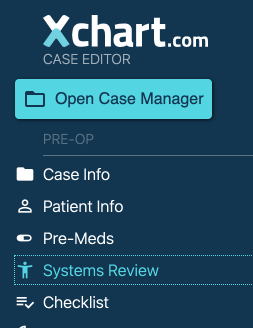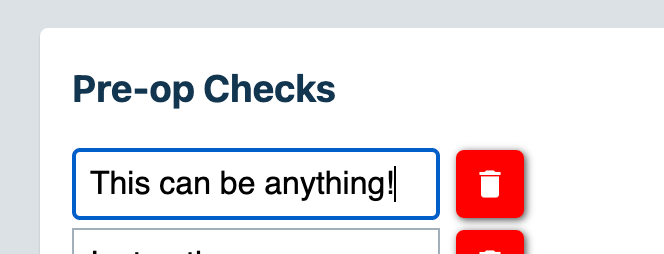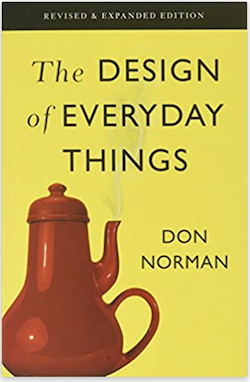Don Norman is an expert on human error. One of his most famous books “The Design of Everyday Things” is required reading for many design and engineering students around the world.
The book discusses in detail how the design of systems is often at fault for error, even in scenarios where the fault is attributed to “human error.” The following quote from a previous chair of the National Transportation Safety Board sums it up nicely:
Yes, our report identified that the final error was made by the Captain on the day of the accident, but the first vulnerabilities were designed into the system years before. Accidents, like a fraying rope, are always a series of missed opportunities, but the blame typically falls on the final strand in a rope that breaks - often it is the human being. (From the prepared remarks by Deborah Hersman, chair of NTSB, April 8, 2014.)
Don has defined two main classifications of errors that have become a framework for other researchers in his field:
- A slip is an unconscious error caused by inattention.
- A mistake is a conscious error caused by a mismatched mental model.
As an expert in the field of sedation, you are unlikely to make a lot of mistakes. But, the interesting thing is, the more of an expert you are at something, the more likely you are to make slips!
A slip can be as harmless as a typo, or have severe consequences such as giving 10x the required sedative to a patient.
The research has shown that slips actually happen more for experts because more and more of the complex tasks you have to perform become subconscious. One explanation of this is due to the fact that our minds are fantastic at simplifying and generalizing the vast information available in the world around us. As a result the cues our subconscious mind stores to determine a correct action are only sufficiently precise for that task. These subconscious cues may be oversimplified, or we may be carrying out multiple subconscious routines that contradict or lack sufficient distinction from one another. In these scenarios, we are far more likely to make a slip.
A simple example of contradicting processes may be holding a piece of trash and our car keys in the same hand. One process is holding a firm grasp on our keys, but another is focused on throwing away the trash we grabbed when leaving our car. We then proceed to throw both the trash and our keys into the trash.
To make matters worse, we all intuitively know that a slip is far more likely to occur when we are distracted. Professional environments are inherently complex and full of tools, equipment, personnel, and the tasks being performed lead to a very dynamic, distraction-prone environment.
Aviation authorities know this too. This is why during key portions of a flight, they have implemented something called a “sterile cockpit.” No conversation should occur that isn’t directly related to the task at hand. Similarly some hospitals have implemented a system of “medication vests” that nurses wear when retrieving and administering medications to signal to others that they are not to be interrupted. So what should we do? Recognizing our own limitations gives us the awareness to design our environment to minimize risk of error.
We do this all the time. Have you ever left your keys on (or even under) something that you really don’t want to forget to bring with you? Have you thrown out a particularly tempting snack when you’re trying to lose weight? Or even something as simple as making a list of items to get at the grocery store so you don’t forget something?
All these are simple examples of designing your environment for success or to avoid errors.
How much more so, should we be designing for safety and success when a patient has entrusted their life into your hands?
Checklists
We at Xchart are huge believers in checklists as a way to mitigate slips. This is well supported by research. Entire books have been written on the subject. See the checklist manifesto.
Some folks resist checklists, because they feel they see them as an imposition or perhaps even an insult to their competence as a practitioner.
In aviation, it’s the exact opposite. Most of us would not be excited to hear that the pilots of the 777 we’re boarding don’t feel they need a preflight checklist.
It turns out that a checklist system often makes you look more competent, not less.
Dynamic checklists and constraints
At Xchart we treat each anesthesia chart as a giant, dynamic checklist. Each section of the menu in the case editor shows a check mark the instant a section is complete.

You cannot sign and thereby finalize an anesthesia chart in our system without having completed the various sections. You can complete the items in almost any order and many items are completely optional. But, you cannot sign it until it’s all filled out.
One of the steps, is in and of itself a customizable pre-op checklist. So you can add whatever checks make sense for you, based on your preferences and local regulations.

In a sedation case, the idea of “completeness” is quite dynamic. For example, as the case is under way, the “vitals” step stays complete as long as you have all the vitals recorded up until that point. But as the case continues, it may at some point become incomplete if the patient is not hooked up to the monitor.
If you’re missing any expected data point of any checkpoint that step will not be “complete” unless you explicitly fill it in or mark it as skipped.
In this way, you can be absolutely sure that you have a complete record every single time.
Choose what works for you
Of course we think Xchart is a great solution, but regardless of the approach you choose, we urge you to intentionally design your environment for safety and success.
